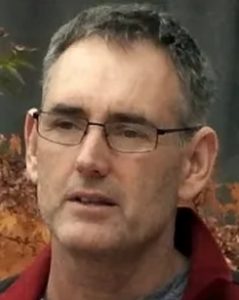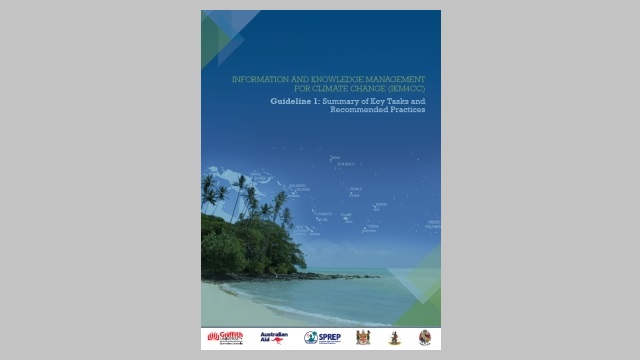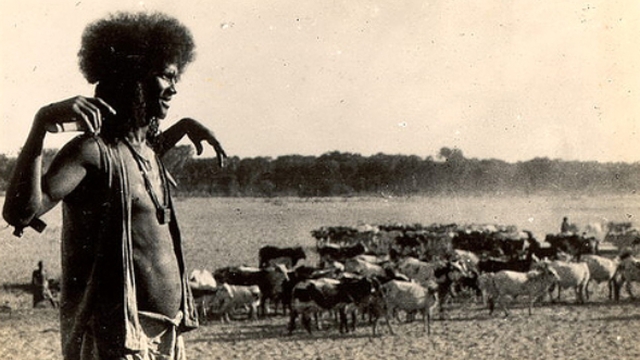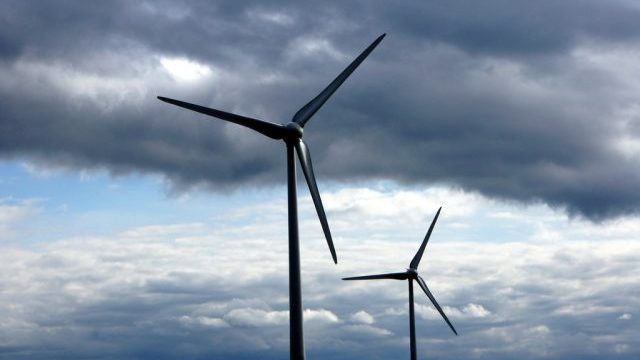
Keys to transformation: Interactions of values, rules, and knowledge
By Russell Gorddard, Matthew Colloff, Russell Wise, and Michael Dunlop. Originally published on the Integration and Implementation Insights blog.
Adapting to climate change can require profound alterations in environmental management and policy. However the social context of a decision process limits options and resists change, often dooming attempts to adapt to climate change even before they begin. How can decision makers in policy and management more effectively see the institutional and social water they swim in, in order to better drive change?
Values, rules and knowledge (vrk) provide a useful heuristic to help decision makers analyze how the social system shapes their decision context. Put simply, decisions require:
- knowledge of options and their implications
- values to assess the options
- rules that enable implementation.
Viewing the decision context as an interconnected system of values, rules and knowledge can reveal limits to adaptation and suggest strategies for addressing them1.
Values are the set of ethical precepts that determine the way people select actions and evaluate events.
Rules are both rules-in-use (norms, practices, habits, heuristics) and rules-in-form (regulations, laws, directives).
Knowledge is both evidence-based (scientific and technical) knowledge and experiential knowledge.
Decision context is the subset of interacting subsystems that are at play in a particular decision process. One core idea is that the decision context may exclude relevant values, knowledge or rules from being considered in decisions. Adaptation may therefore involve change in the decision context.
The vrk heuristic provides a useful reminder of the limits of knowledge alone to change decisions. For example, a study involving other colleagues and led by Suzanne Prober2 explored constraints on adaptation decisions in agricultural landscapes of high conservation value. We found that values were the major limiting factor and that knowledge was the least constraining.
Shared recognition of the importance of values and rules, as well as knowledge, can provide a valuable starting point for effective adaptation action. However, the institutions and social systems that define decision processes can be hard to influence. By digging into the interactions among values, rules and knowledge we can describe the societal dynamics that shape decision contexts in a way that helps identify leverage points and develop long term adaptation strategies. If, for instance, we identify that particular values and voices are being ignored or marginalised in the decision making process, then we can ask what aspects of the rule or knowledge system are preventing their inclusion.
Vrk interactions in biodiversity conservation
Biodiversity conservation in Australia provides an example3. A narrow focus on threatened species conservation becomes problematic under climate change. When climates are stable, preserving threatened species provides a good umbrella for protecting other important aspects of an ecosystem. If threatened species legislation prevents clearing and development of an urban bushland to protect a rare orchid, the recreation and aesthetic values of this bushland are also maintained. However, under climate change life gets more complicated. The goal of conserving species that are innately vulnerable to climate change may be in conflict with other, more attainable conservation objectives. If the threatened species umbrella fails, then maintaining a healthy ecosystem or the amenity of landscapes may need to be goals that are explicitly pursued in their own right.
How does an analysis focusing on vrk interactions enable transformative adaptation in this case? Let us start with one clear interaction between knowledge and values relating to threatened species. Considerable knowledge from modelling the distributions of threatened species, and the processes that threaten them, has been used to support and reinforce the ethical precept, or value, that threatened species can and should be protected. As a result, much conservation effort has gone into determining how best to optimise the survival of threatened species and alleviate threats. Interactions of values and rules are also evident. The values we assign to threatened species are embedded in federal conservation legislation and policy. For example, the role of the Australian government’s Threatened Species Commissioner is described in values terms: partnering in “the fight against extinction.”
From this baseline, we can start to form questions about the dynamics of the vrk system for conservation. That is, how the decision context came into being, and what social processes maintain support for it and reproduce its key features.
- Has the legislation and research focus on threatened species affected the way people think about and express their value for ecosystems and biodiversity? And does the focus on expressing value for nature through threats to rare, iconic species in turn reinforce support for threatened species legislation and research?
- Does the policy and legislation encourage a research focus on threatened species to the exclusion of other important areas such as ecosystem health and functions? And does the focus on threatened species research help shape and reinforce the legislation?
- Do community, advocates and passionate researchers prize threatened species in part because their presence activates threatened species legislation which then effectively protects places and the full suite of values associated with them such as a healthy native ecosystem and landscape amenity?
While simple, this example illustrates how we can move from diagnosis of the constraints imposed by the decision context towards analyses of the social and political interactions and dynamics that create this context. This systemic perspective allows us to search for stabilising feedbacks and potential leverage points.
- Is a focus on endangered species locked into conservation practice and, if so, how does it limit future options?
- What are the opportunities to break down limiting co-dependencies between particular forms of knowledge and particular sets of rules?
- Does a focus on endangered species provide common ground and mutual support for linking conservation research and policy?
- Is it possible to use this common ground to start growing research and legislative frameworks that incorporate a broader set of conservation objectives?
Focusing on vrk interactions reveals where and how power is wielded. In the example above we see that power is exercised through the ‘threatened species’ concept. Focusing on the vrk interactions reveals how the concept legitimises certain options and knowledge, and excludes other value and knowledge systems. Having the threatened species concept embedded in legislation makes species-based knowledge more powerful. Looking at power through the vrk lens therefore provides pointers to where power exists that may resist change, and where resources may be directed in order to harness and align existing power to enable change.
Conclusion
The vrk model is not an attempt at an inclusive theory, rather it is intended as an everyday gardening tool – a trowel or a spade – useful for digging into our social systems in situations where we recognise they need to change. As discussed in Lorrae van Kerkhoff’s blog post, Enabling co-creation: From learning cycles to aligning values, rules and knowledge, we are exploring how the vrk model can be used as a tool to help us learn about the societal structures that determine our paths and options in a changing world, and how we can create and choose new pathways. Does this resonate with your experience?
Biographies
 |
Russell Gorddard PhD is an agricultural and natural resource economist by training with research interests in sustainability, adaptation to global change and the relationship between knowledge, values and rules in framing the decision context for adaptation planning and action. He is based at CSIRO Land and Water in Canberra, Australia. |
 |
Matt Colloff PhD is an ecologist and taxonomist by training, a founder member of the Transformative Adaptation Research Alliance and Visiting Fellow at the Fenner School for Environment and Society, The Australian National University in Canberra. His current research is in integrative science to underpin natural resource management and adaptation to global change. Matt is passionate about exploring the influence that people have on landscapes and place and how, in turn, place influences people. |
 |
Russell Wise PhD is a Senior Sustainability Economist in the Climate Risks and Resilience Group, CSIRO Land and Water in Canberra, Australia. He has built and led interdisciplinary teams and research programs to help stakeholders understand and respond to unprecedented global changes in climate, ecosystems and economies. He is one of Australia’s leading authorities in adaptation, particularly in relation to overcoming barriers to long-term decision-making in the face of uncertainty to enable just and efficient outcomes. Key to this has been the development of original effective approaches to collaboratively designing and using original concepts and decision-support tools and processes such as adaptation pathways to support policy, planning and investment decision making with government, non-government, and private agencies in Australia, Papua New Guinea and Indonesia. |
 |
Michael Dunlop PhD is a Senior Research Scientist at CSIRO Land and Water in Canberra, Australia. He works on the intersection between the social, institutional and biophysical dimensions of managing the impacts of transformational climate change. He focuses on helping policymakers and managers understand how climate change affects the challenge of conserving biodiversity and sustaining ecosystem-based livelihoods over the coming century. He works with national, state and local governments, natural resource management bodies and non-government organisations in Australia and globally, developing concepts and processes to help them adapt their management and strategies. His research interest are focused on how people value biodiversity, the factors that constrain and enable the ways that managers and decision makers respond to future climate change, understanding how values, rules and knowledge change and interact to shape available decision options, and adaptation to transformational climate change. |
Article source: Keys to transformation: Interactions of values, rules and knowledge.
Header image source: Figure adapted from original in Gordardd et al. (2016).
References:
- Gorddard, R., Colloff, M. J., Wise, R.M., Ware, D. and Dunlop, M. (2016). Values, rules and knowledge: Adaptation as change in the decision context. Environmental Science and Policy, 57: 60–69. Online (DOI): 10.1016/j.envsci.2015.12.004 ↩
- Prober, S. M., Colloff, M. J., Abel, N., Crimp, S., Doherty, M. D., Dunlop, M., Eldridge, D. J., Gorddard, R., Lavorel, S., Metcalfe, D. J., Murphy, H. T., Ryan, P. and Williams, K. J. (2017). Informing climate adaptation pathways in multi-use woodland landscapes using the values-rules-knowledge framework. Agriculture, Ecosystems and Environment, 241: 39–53. Online (DOI): 10.1016/j.agee.2017.02.021 ↩
- Dunlop, M., Parris, H., Ryan, P. and Kroon, F. (2013). Climate-ready Conservation Objectives: A Scoping Study. National Climate Change Adaptation Research Facility: Southport, Queensland. Online: https://www.nccarf.edu.au/publications/climate-ready-conservation-objectives-scoping-study ↩






